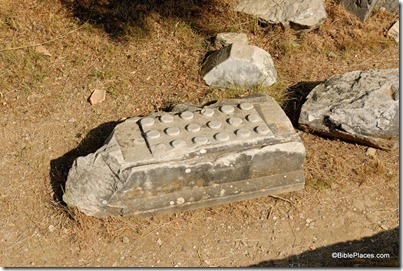Ennion created some of the most beautiful pieces of glass of all time. He was producing mold-blown glass in the years when Jesus lived in Galilee. If Ennion worked in Sidon, as many suppose, Jesus may have passed by his shop (Matt 11:21; 15:21; Mark 7:31). Such a large collection of Ennion’s works have never before been on display.
From Israel Museum’s facebook page:
Made by Ennion: Ancient Glass Treasures from the Shlomo Moussaieff Collection – on view through January 28, 2012.
The Israel Museum presents an exceptional group of ancient mold-blown glass vessels, many of them made by Ennion, a master glassworker who was the first to put his name on his art. Ancient glass bearing the name of the artist is exceedingly rare, and never before have so many examples been gathered in a single display. The exhibition brings together forty-three pieces, nine of them signed, including a number of pieces that rank among the highest achievements in glassworking of all time. Approximately half of the works are on loan from the rich collection of Shlomo Moussaieff and are exhibited to the public for the first time.
The J. Paul Getty Museum has a brief biography of Ennion.
Ennion worked as a glassmaker about 1 to 50 A.D. His signature is known from over thirty surviving pieces, and many other works are attributed to him on the basis of style. Ennion created the ground-breaking technique of blowing glass vessels into molds. This new process allowed the vessel and its decoration to be created at the same time and permitted the creation of multiple copies of the same vessel. Ennion’s clear, precise designs distinguish his work; he also minimized the visibility of the lines caused by the seams in the mold.
The location of Ennion’s workshop is debated, in part because his work is found throughout the Roman Empire. Some scholars believe he worked in Sidon in modern Lebanon, while others assert that he worked in northern Italy. The inscriptions he frequently used as decoration may provide a clue. Though his name may have been Semitic in origin, he signed it in Greek, the language of the eastern Mediterranean, not Italy. The city of Sidon, where he may have worked, had all the raw material for glass-making and extensive trade connections.
